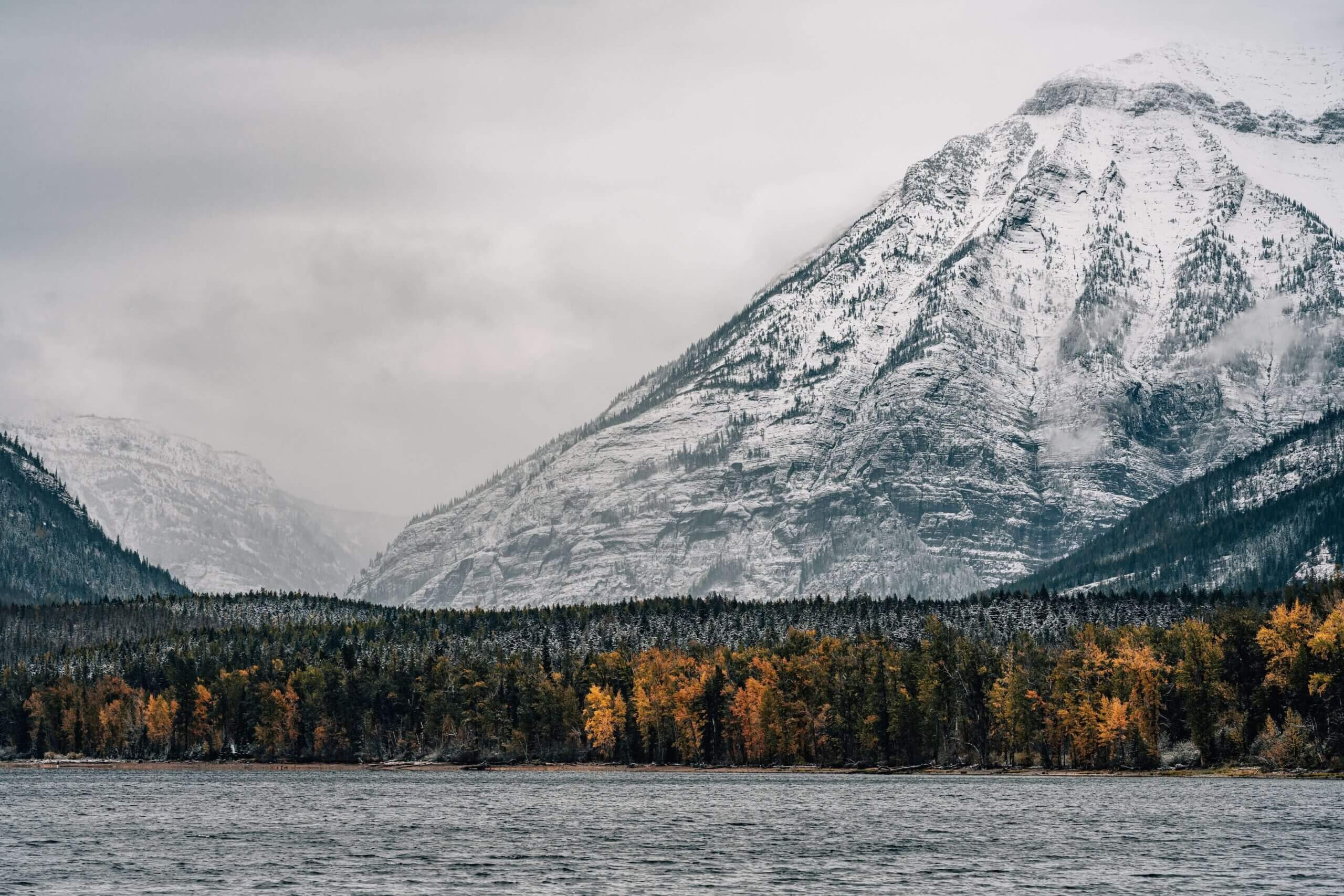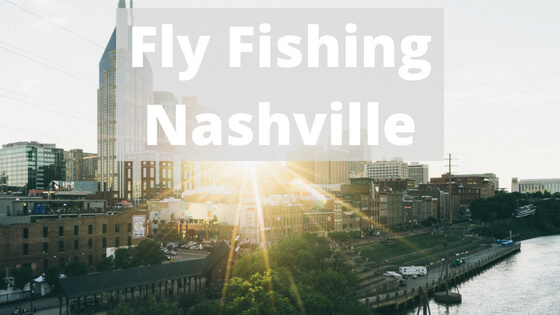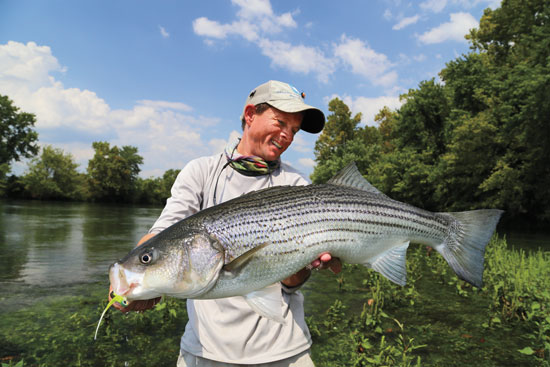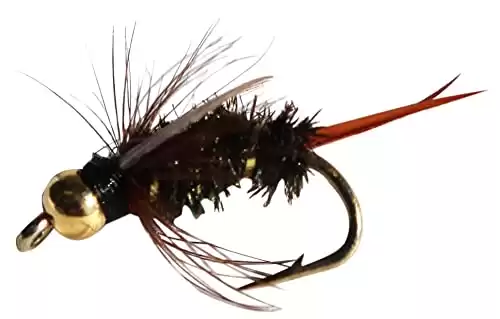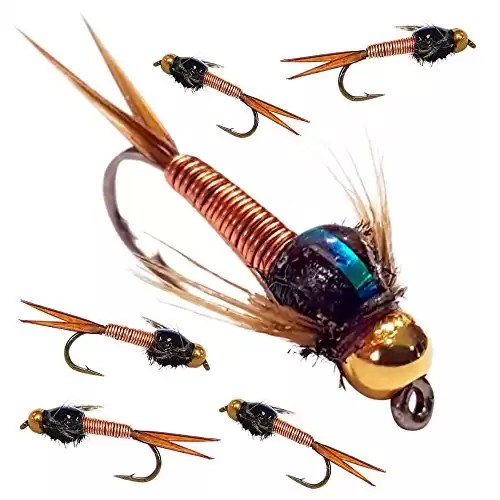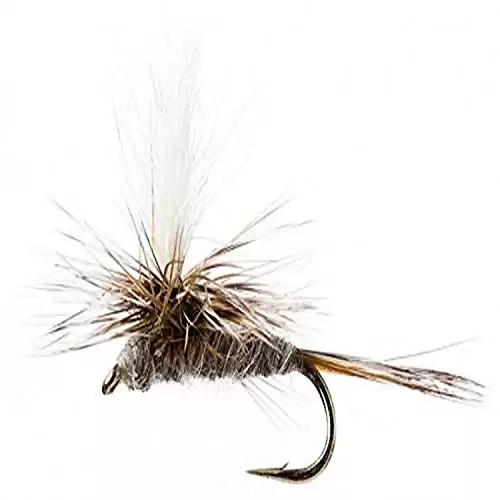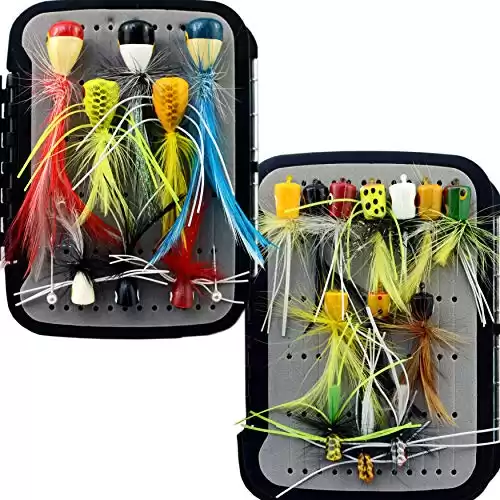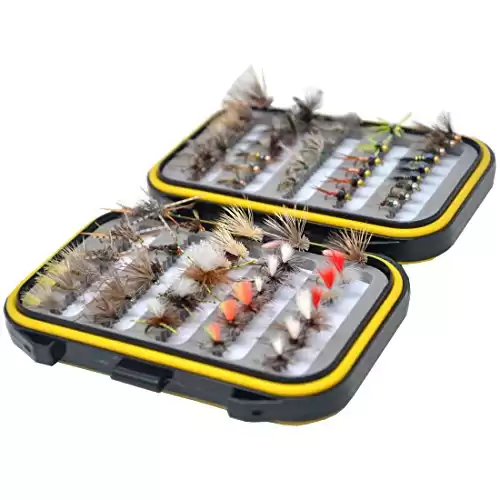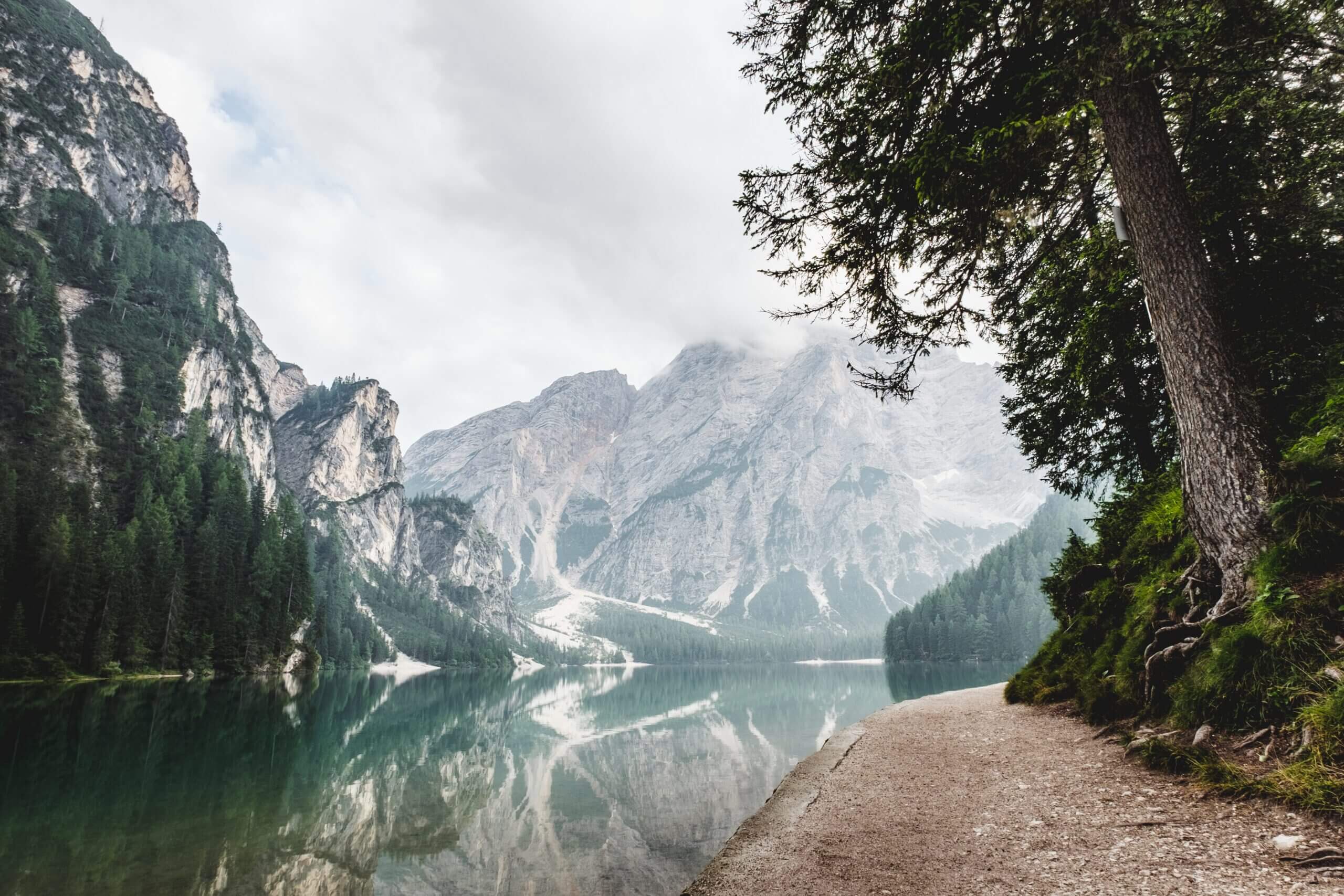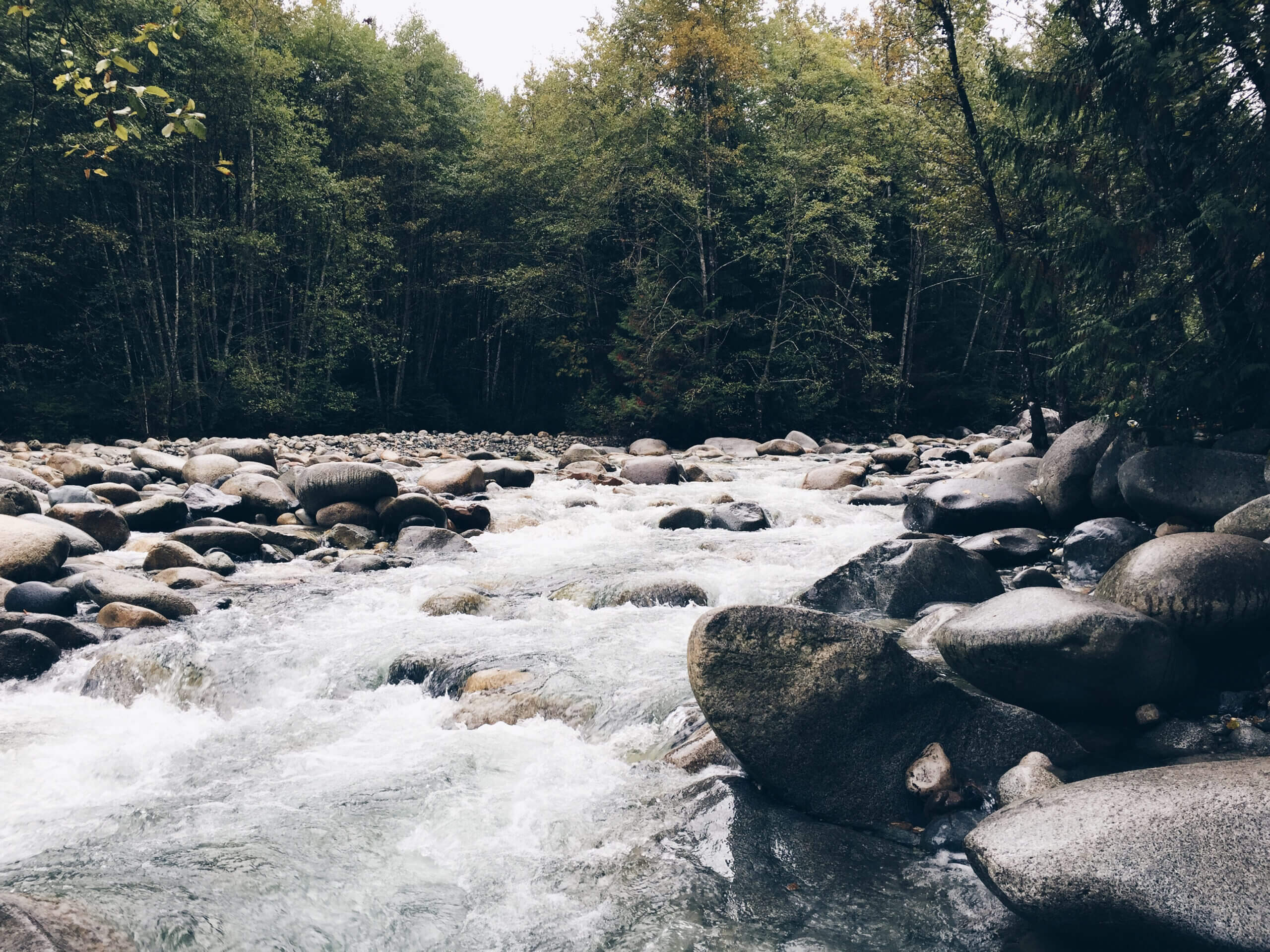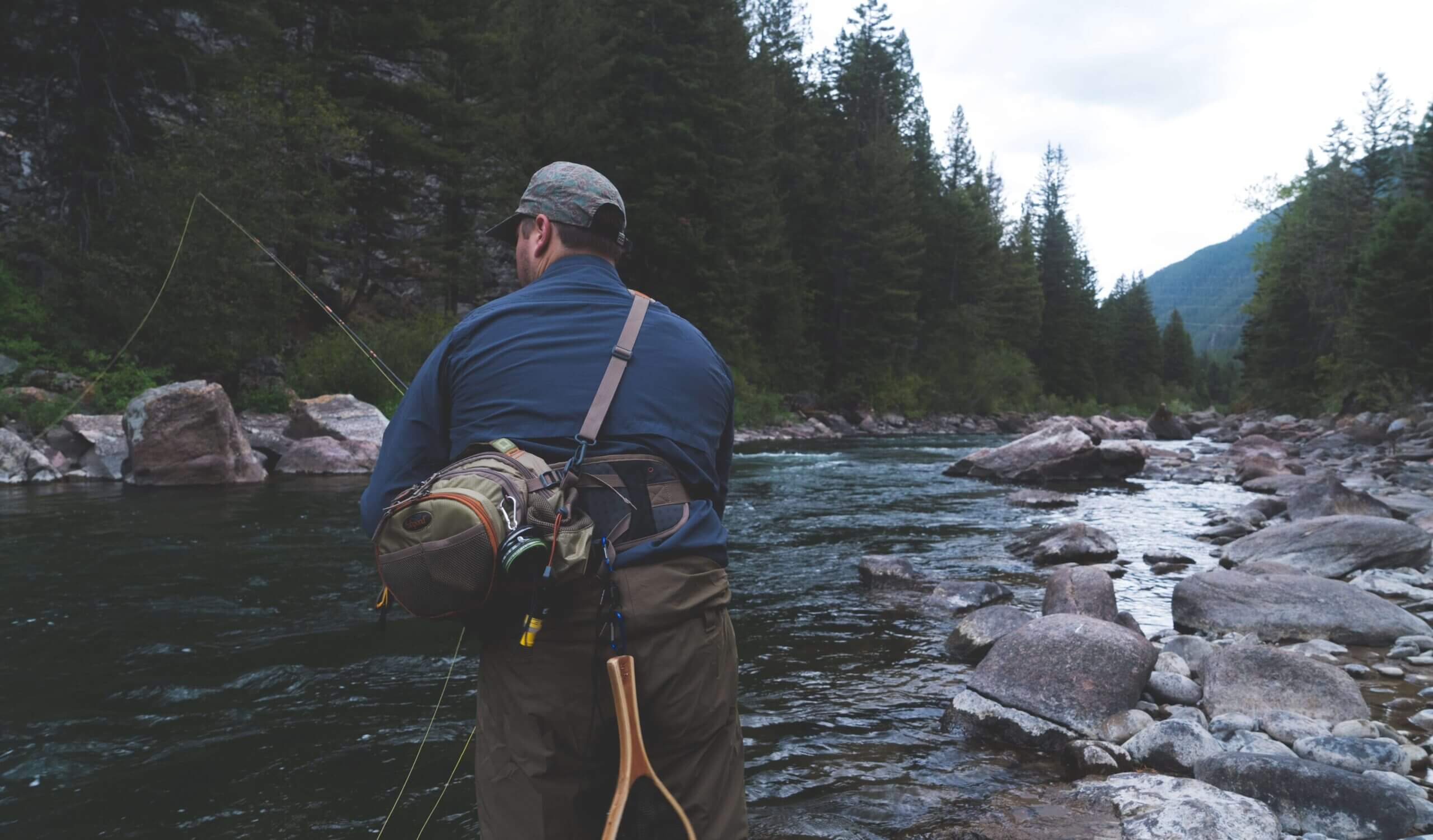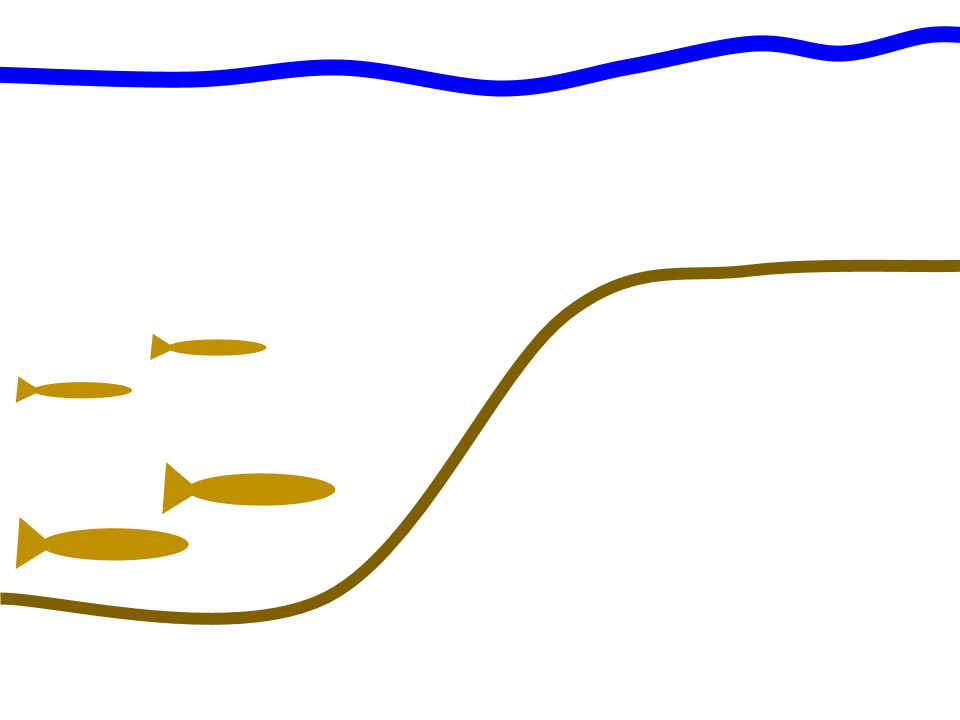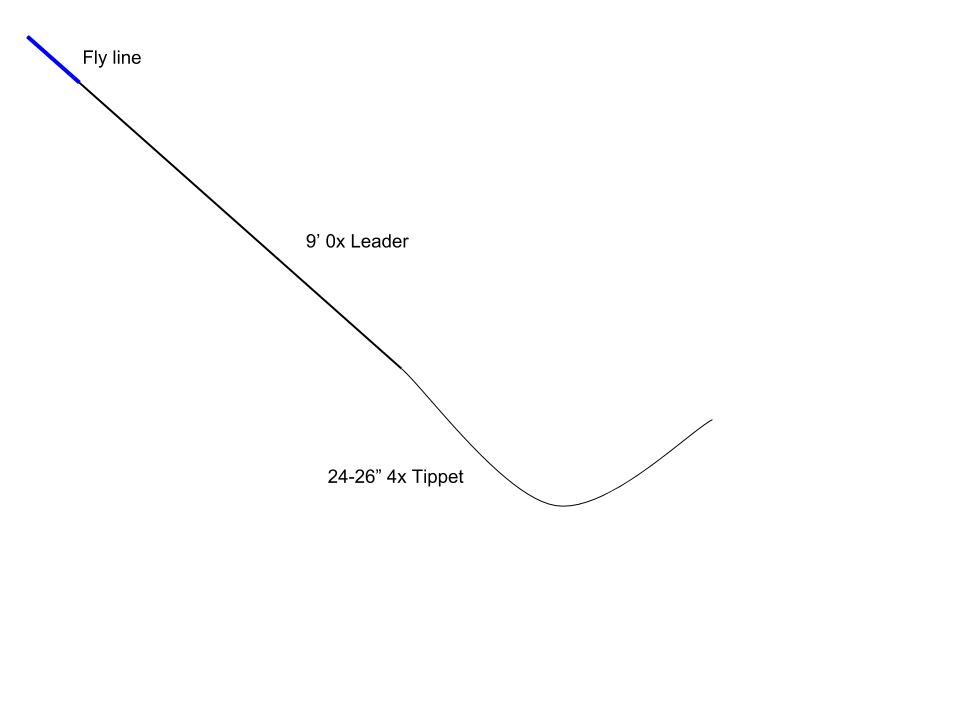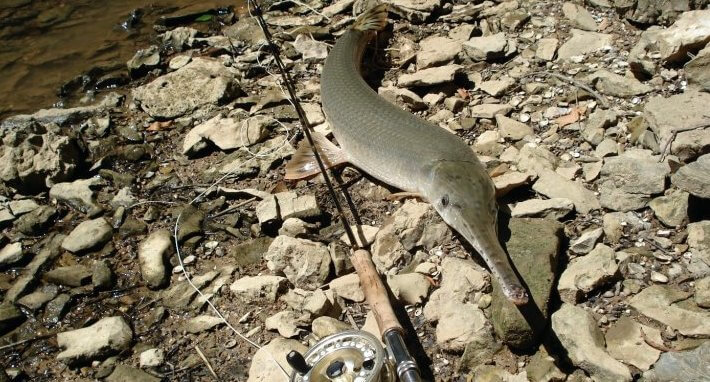Montana is the mecca of fly fishing. The popular movie River Runs Through It was based in Montana.
Montana is full of pristine rivers, winding creeks, and high alpine lakes. The view is almost as beautiful as the fish you can catch there.
It’s an easy place to lose focus on fly fishing because you’re distracted by the mountain view and wilderness.
It’s a special place. But it’s also intimidating. There are few states that offer as many fishing destinations as Montana.
This guide will detail the rivers, creeks, and lakes to fly fish in Montana. We’ll also include where you can stay in the state near your fishing locations.
Let’s go!
Rivers to fish
Gallatin River
The Gallatin River is a 140-mile-long tributary of the Missouri River located in southwest Montana. It is renowned for its Blue Ribbon trout fishing, and its waters provide excellent rafting, kayaking, and canoeing opportunities.
The beautiful, fast-flowing river traverses a picturesque valley flanked by the spectacular peaks of the Absaroka and Gallatin mountain ranges. Numerous hiking trails, scenic overlooks, and campsites line its banks, making it an ideal destination for outdoor adventurers.
It’s one of the few rivers in Montana where you can pitch a tent overlooking the river (within a designated campsite of course).
Fun fact, the River Runs Through It was shot on the Gallatin (and Yellowstone).
Where to stay:
Madison River
Fly fishing the Madison River in Montana is a truly unique experience. The river is one of the most iconic and renowned rivers in the area, with its crystal clear water, its amazing trout, and its scenic banks lined with towering rocky cliffs. The Madison offers an abundance of rainbow, brown, and cutthroat trout, along with other species like whitefish and grayling.
The Madison is easily accessible and provides excellent streamer fishing, dry fly fishing, and nymphing opportunities. The river has a variety of runs and riffles, and deep calm pools, that have a variety of different lies and water depths and provide the perfect environment for fly fishing.
The chances of catching a trophy trout and a trout of a lifetime is larger on the Madison than many other rivers. It’s also a great spot to catch a whitefish, a native fish to Montana that hug the bottom of rocky, fast flowing rivers.
Where to stay:
Missouri River
Fly fishing the Missouri River in Montana is an angler’s paradise. The river boasts a wide variety of native species including rainbow trout, brown trout, whitefish, Smallmouth Bass, and other species. The river is home to a diverse aquatic insect population, and is rife with lively hatches throughout the warmer months.
The Missouri offers anglers a chance to target large rainbow trout in wide deep pools, as well as technical small stream fishing for brown trout and whitefish in shallow riffles. The Missouri makes for a challenging and rewarding fishing experience.
Where to stay:
Yellowstone River
Fly fishing the Yellowstone River in Montana is an incredible experience. The river, located in beautiful Paradise Valley, stretches all the way from Yellowstone National Park to the Missouri River near the North Dakota border.
It is largely populated with wild cutthroat trout that can be caught on a variety of techniques such as nymphing, streamer fishing, and dry fly fishing. Surrounded by rolling hills, towering mountains, and stunning views, fly fishing the Yellowstone River provides anglers with an unforgettable experience as they wade into the cold, clear waters.
The Yellowstone River is a sight of its own. The river is huge. It’s as wide as a football field is long in some parts (if not wider). The amount of water flowing down the river is breathtaking.
Fly fishing the Yellowstone is hard. The water is big and the currents are many. And make sure to check with a local fly fishing shop as the Yellowstone has its own set of regulations.
Where to stay:
Blackfoot River
Fly fishing the Blackfoot River in Montana is an angler’s dream. The river is located in the Rocky Mountains, and is classified as a freestone river, offering a variety of great trout fishing. The river also offers excellent scenery as it flows through the mountains.
The Blackfoot River can be floated in a drift boat with a guide or by wading. Both experiences offer unique experiences to catch healthy trout on the fly.
The Blackfoot offers world-class dry fly fishing. The river is an insect haven and the fish gorge themselves on the little guys.
The river has popular mayfly hatches as well as caddisflies and stoneflies. Again, check with a local fly fishing guide shop to time these perfectly.
The most common species include rainbow, brook, and brown trout.
Where to stay:
Big Hole River
Fly fishing the Big Hole River in Montana is a beautiful and challenging experience. The crystal clear waters of the Big Hole, a renowned Blue Ribbon trout stream, are a true paradise to any avid angler. The river is great for dry fly fishing, nymph fishing, and streamer fishing.
The Big Hole is one of the few rivers where you can catch the trifecta: cutthroat, grayling, and whitefish. Some have caught all three without moving their feet. The river also is home to the protected bull trout which is rare but aggressive. If you’re in the area of the bulltroat you’ll know either by seeing it lurking at the bottom of a pool or it will swipe at a hooked fish. They love to eat and fish are high on their list. It’s not uncommon for fly fishermen/women to hook a whitefish only to lose it to a bull trout before netting it.
Where to stay:
Clark Fork River
Fly fishing the Clark Fork River in Montana is known to be an incredible experience. The river is classified as a Blue Ribbon trout stream, and is host to a variety of species including rainbow, brown, Bull, cutthroat and brook trout. It is a beautiful clearwater stream that runs through scenic canyons and meadows.
It is perfect for wade fishing. And it’s one of the few rivers where you can sight fish outside of a hatch. The water is clear and skinny (shallow). There are still plunge pools where larger fish sit but they’ll come up in the shallows to feed on insects and smaller fish.
Where to stay:
Bitterroot River
Fly fishing the Bitterroot River in Montana is a mesmerizing experience. With beautiful mountain vistas, the Bitterroot River runs right through the stunningly scenic Bitterroot Valley. Anglers fishing the Bitterroot River have the opportunity to catch a variety of river species, like brown trout, rainbow trout, and whitefish.
The Bitterroot is accessible and easy for a novice fisherman/woman to access. There is sparse vegetation surrounding the river making backcasts clear of any snags.
The river is known to have excellent insect hatches throughout the year which make the fishing experience even more exciting.
Where to stay:
Rock Creek
Fly fishing on the Rock Creek in Montana is an absolutely breathtaking experience. With its breathtaking mountain views, and crystal clear water running over limestone rocks, it provides a special and unique fishing experience.
The creek is home to many species of fish such as cutthroat trout, brown trout, rainbow trout, and whitefish. Fishing the creek can be very challenging. The creek has numerous insect hatches and if timed perfectly, they make for an exciting fishing experience.
The crystal clear and shallow water make it much harder to catch fish than other rivers and creeks. It is especially harder if the fish are not gorging themselves on a buffet of insects during a thick hatch.
Where to stay:
Bighorn River
Fly fishing the Bighorn River in Montana can be an exciting and challenging experience. The Bighorn River is a tailwater that flows out of the Bighorn Lake, located in Montana’s well-known Bighorn Canyon.
It is home to large rainbow and brown trout, as well as whitefish and Mountain whitefish. The river is over 140 miles of cold, pristine water that offers a wide variety of different terrain and fly fishing opportunities.
The river’s riffles and deep pools are perfect for streamer fishing, dry fly fishing, and nymphing.
Where to stay:
Sun River
Fly fishing the Sun River in Montana offers amazing outdoor experiences. Enjoy the peaceful tranquility of the river and the surrounding environment while you fish in the cool, crystal clear water of the Sun River.
The river is known for its abundance of brown and rainbow trout, along with occasional brook trout and grayling. There are numerous public access points so you’re sure to find your preferred spot.
Whether you’re a beginner or an experienced angler, the Sun River is a great place to fish and one of the top fly fishing destinations in the United States.
Where to stay:
Smith River
Fly fishing in the Smith River in Montana can be a truly rewarding experience. The river is crystal clear, and filled with plentiful trout, including rainbow, brown, cutthroat, and even bull trout.
The best fishing is around the side channels of the river, and in the deeper pools. Like many of the other rivers there is a fishing searson. Check with the local guides to learn the fishing season as they change from year to year and river to river.
The fishing season begins in April and runs until the end of October. Depending on the time of year and the variety of fish being pursued, anglers can use a wide range of fly fishing techniques, such as dry, wet, and streamer fly fishing. The Smith River is home to a variety of fish species, as well as a beautiful backdrop of mountains, situated in a remote area of Montana.
Where to stay:
Jefferson River
Fly fishing the Jefferson River in Montana is a wonderful experience. The Jefferson is one of the most picturesque rivers in the region and is easily accessible from the nearby town of Whitehall.
It meanders through the foothills of the Absaroka and Tobacco Root mountains, offering stunning views of the mountains, hills and grasslands.
The river is home to rainbow and brown trout, and the varied terrain makes it suitable for all levels of fly fishermen. The water is crystal clear and generally easy to wade, making it a delight to explore.
Where to stay:
Ruby River
Fly fishing the Ruby River in Montana can be an enjoyable experience for anglers of all skill levels. The Ruby River offers a range of different fishing opportunities throughout the year, and its pristine waters provide fly fishing enthusiasts with a chance to go after brown trout, rainbow trout, mountain whitefish, and cutthroat trout.
The Ruby River is largely accessible by boat. However, there are several public access areas where wade fishermen/women can park and access the river. The river is wadeable and wide open, making backcasts a cinch.
Where to stay:
South Fork of the Flathead River
Fly fishing the South Fork of the Flathead River in Montana is an experience like no other. The River is crystal clear and the fish are abundant with rainbow, brown, and cutthroat trout.
With the backdrop of the lofty Mission Mountains and the serene beauty of the surrounding national forest, it is easy to enjoy the peace and serenity of the South Fork. The best time to fish the South Fork is in the spring when runoff is raging and the river is full of cold, pure water.
Using a variety of techniques including dry flies, streamers and nymphs, anglers can look forward to catching a variety of trout, including some trophy sized cuts.
Occasionally, a rogue grayling and whitefish can be caught on the South Fork but not in larger numbers.
Where to stay:
Creeks to fish
Rock Creek
Fly fishing the Rock Creek in Montana is an exciting and rewarding experience. The creek is located in the heart of Montana’s beautiful Blackfoot Valley and is well known for its gin-clear water, wild trout, and colorful scenery.
The Rock Creek flows through a diverse array of habitats, from meandering creekside meadows to faster, boulder-strewn rapids. The creek is home to a plethora of fish species including brown trout, rainbow trout , cutthroat trout, and brook trout. And occasionally you may catch a native Bull trout.
The creek is often crystal clear which makes sight fishing a possibility without a hatch occurring.
Where to stay:
DePuy Creek
Fly fishing the DePuy Creek in Montana is a unique and enjoyable experience. The clear, cold water from the glacier-fed creek is perfect for trout fishing. The creek itself is picturesque and surrounded by lush meadows and mountains, giving it a beautiful backdrop.
The long, narrow stretch of creek makes for a variety of interesting casts, and there are plenty of deep pools and pocket water for anglers to explore. The creek is home to a variety of trout species, including brown, rainbow, and cutthroat. The creek also provides anglers with plenty of opportunities to catch larger fish.
Additionally, the creek is stocked with large hatchery trout which can be caught throughout the season. So if you’re interested in a pristine fishing experience, the DePuy Creek is not ideal for you.
Where to stay:
Nelson Creek
Nelson Creek is small and is known for its abundance of native Westslope cutthroat trout, as well as rainbow and brown trout. The lower section of the creek is one of the most popular spots for fly fishing due to its deep pools and slow runs.
The crystal-clear water and rocky outcrops make for an unforgettable fly fishing experience.
Fly fishing in Montana does not get as picturesque as Nelson Creek.
Where to stay:
High Alpine Lakes
Fly fishing the high alpine lakes in Montana is an exciting experience. Maybe you’ve never seen or heard of an alpine lake. If not, you need to make a point to visit one while in Montana.
The view itself is worth the time it takes getting there. Most of the time you need to hike in to see the lakes but a few are driveable.
An alpine lake is a lake at a high altitude in a mountainous zone. The lake is usually near or above the treeline. And they often have a period of ice over.
Fishing a high alpine lake is breathtaking because of the views. Often the lakes are nestled in the mountains. You have snow covered peaks on all your sides. The water is crystal clear and reflects the breathtaking scenery like a mirror.
The fishing is excellent as well. Nymphs and streamers are the way to go. Occasionally, the lakes have their own insect hatches which make for a fun fishing experience. These can vary by time of the year and time of the day. The local fishing guide can help identify when to fish these lakes.
You also want to be aware of other animals when fishing these alpine lakes since you might be a mile or two from your car. Grizzly bears are a concern so prepare accordingly. A canister of bear mace is a must. And keep it easily accessible on your waste. A loud whistle is also helpful in deterring curious bears.
Where to stay:
Lodges, guides, and fly shops
The lodges, guides, and fly shops below are not an exhaustive list. The area is chock full of A+ guide services, lodges, and fly shops. Montana is a fly fishing and outdoor paradise. The below are just some of the best in the area that you can consult for information or hire out right.
Many fishermen and women travel and fish Montana on their own by asking the pros questions. You definitely can DIY fly fish Montana.
Missoula River Lodge
Missoula River Lodge is a riverside hotel located in the city of Missoula, Montana. The hotel offers suites and rooms with views of the river, as well as an outdoor pool and hot tub. The lodge has an on-site restaurant, offering a range of Montana-inspired dishes with locally-sourced ingredients.
It also has an event space for wedding receptions, business meetings, and other special events. Guests can also enjoy the nearby hiking trails, stream-side trails, and the Flathead River.
Headhunters Fly Shop
Headhunters Fly Shop is a fishing outfitter located in Craig, Montana, on the banks of the Missouri River. They provide fishing tackle, equipment, and apparel for people of all ages and abilities. They also offer guided fly fishing trips, classes, outfitters and a wide selection of quality flies, rods, reels and more.
Headhunters Fly Shop prides itself on providing the best customer service to ensure the perfect experience for each of their customers. They cater to both beginner and experienced fly fishermen and strive to ensure they get the best possible experience.
Montana Angler
Montana Angler is a full-service fly-fishing outfitter providing guided trips and fishing trips throughout Montana’s most renowned rivers and streams. They offer services including fly-fishing lessons, casting clinics, custom fly tying and fly fishing trips for beginner to advanced anglers. The company also offers gear rentals, rod building kits and apparel.
Montana Angler guides team up with the best local guides to help you catch fish and provide a great fishing experience. The anglers and guides are passionate about fly fishing and strive to provide quality service for each and every customer.
Montana Fishing Outfitters
Montana Fishing Outfitters is a full-service fly fishing guide and outfitter, specializing in providing anglers with a unique, personalized and enjoyable Montana fly fishing experience on some of the state’s most beautiful rivers and streams.
Whether it’s a guided float trip on one of the legendary Blue Ribbon streams of Southwest Montana, or a walk-wade fishing experience on a small stream in the Gallatin Valley, we offer customized trips tailored to every angler’s needs and desires.
Their experienced and knowledgeable guides know Montana’s waters and fish the best. They will put you on fish and get you home safely.
DIYers
Fly fishing Montana does not require a guide or lodge. Many successfully DIY their fly fishing trip to Montana. I’ve done it with my family. While it might be more frustrating at times, every fish is more rewarding when caught on your own.
However, if you only have a couple of days to fish Montana a guide might get you the biggest bang for your buck as you’ll spend less time learning. Hiring a guide is a cheat code and helps you skip many steps.
Matching Montana’s hatch: the flies you must bring
Each of the rivers are different when it comes to insect species and hatches. Insects rely heavily on water temperature and while the rivers and creeks are close to the same temperature they do vary.
Check with local fly fishing guide shops on their website and call their store. They are often more than happy to report on what they’re seeing. It doesn’t hurt to place an order to loosen the lips (especially helpful when visiting in person). Also, do not be a stranger to forums on the internet. If you can not find any, check out the fly fishing and Montana subReddits.
Fall
Streamers: Clouser Minnow, Mini-Dungeon, JJ Special, Wooly bugger
Dry Flies: Mahogany Dun, Blue Wing Olive, Trico, October Caddis
Nymphs: Pheasant Tail, Zebra Midge, Pat’s Rubber Legs, Prince Nymph
Winter
Streamers: Clouser Minnow, Olive Conehead Zuddler, Bangerhead Sculpin, Wooly Bugger
Dry Flies: Midges, small Parachute Adams
Nymphs: Zebra Midge, Pink Scud, Pheasant Tail
Spring
Streamers: Wooly Bugger, Yellow Mini-Dungeon, Olive and White Barely Legal
Dry Flies: Parachute Adams, Griffith’s Gnat, Blue Wing Olive, March brown
Nymphs: Pheasant Tail, Zebra Midge, Sow Bug, Prince Nymph
Summer
Streamers: Kreelex, Sculpzilla, Wooly Bugger
Dry Flies: Parachute Adams, Elk Hair Caddis, Salmonfly, Terrestrials
Nymphs: Pat’s Rubber Legs, Prince Nymph, Scud, Zebra Midge
Montana fishing regulations
Fishing in Montana is different from fishing in the southern United States. There are more rules and regulations to follow about how to fish (some waters are fly fishing only) and when to fish.
Each of the rivers and creeks have a fishing season. These seasons are custom to change year by year and vary by river, creek, and lake. Sometimes the regulations are meant to protect the fish and other times it’s to protect the fisherman/woman.
Please check with the local guiding service and fly shop to thoroughly understand the rules and regulations for the waters you plan to fish.
Travel to Montana
Plug in where you want to go to find the smoothest journey.
Frequently asked questions
What is the best month to fly fish in Montana?
There are too many variables when it comes to determining the best month to fly fish in Montana. It boils down to which fish you want to catch, how you want to catch it (e.g., dry fly, streamer), and where you want to fish (e.g., lake, river, high alpine lake).
Our favorite time to fish Montana is late June and early July. The snow melt has come down, the rivers are normalizing, and your heavy hatches start. It’s also comfortable outside, especially for us southern folk.
Is Montana good for fly fishing?
Montana is the mecca for great fly fishing. Perhaps the most popular and iconic fly fishing movie, “A River Runs Through It” was filmed on the waters of Montana.
Montana holds some of the most desired fish to catch on the fly rod including brook trout, brown trout, cutthroat trout, rainbow trout, bull trout, grayling, and whitefish.
Where is the best fly fishing in Montana?
The best fly fishing comes down to what type of water you want to fish (e.g., river, creek, high alpine lake) and which fish you want to catch.
How much does it cost to go fly fishing in Montana?
It’s up to you. Of course, you can spend thousands on a nice lodge and hundreds on a guide. You can also do it yourself and only pay for the gas to get you around.
(Don’t forget your fishing license.)
Wrapping up: fly fishing Montana
Montana is a beautiful state with breathtaking scenery, majestic animals, and some of the best fisheries in the lower United States.
There are numerous rivers, creeks, and lakes to fish. And trophy-sized fish throughout.
Use this guide to narrow your search down to your top bodies of water for your next journey. And of course, let us know how your trip goes (please send pictures).

